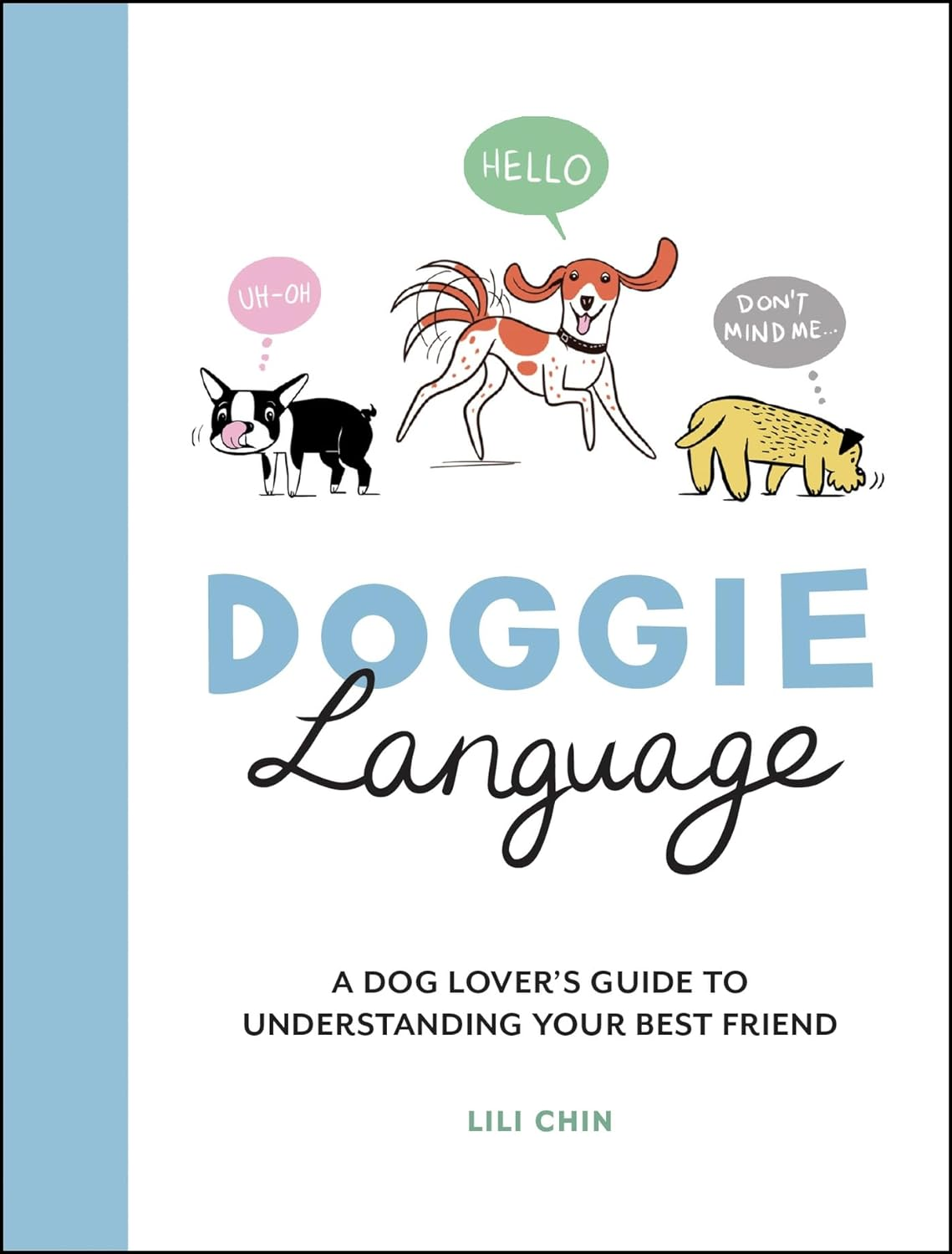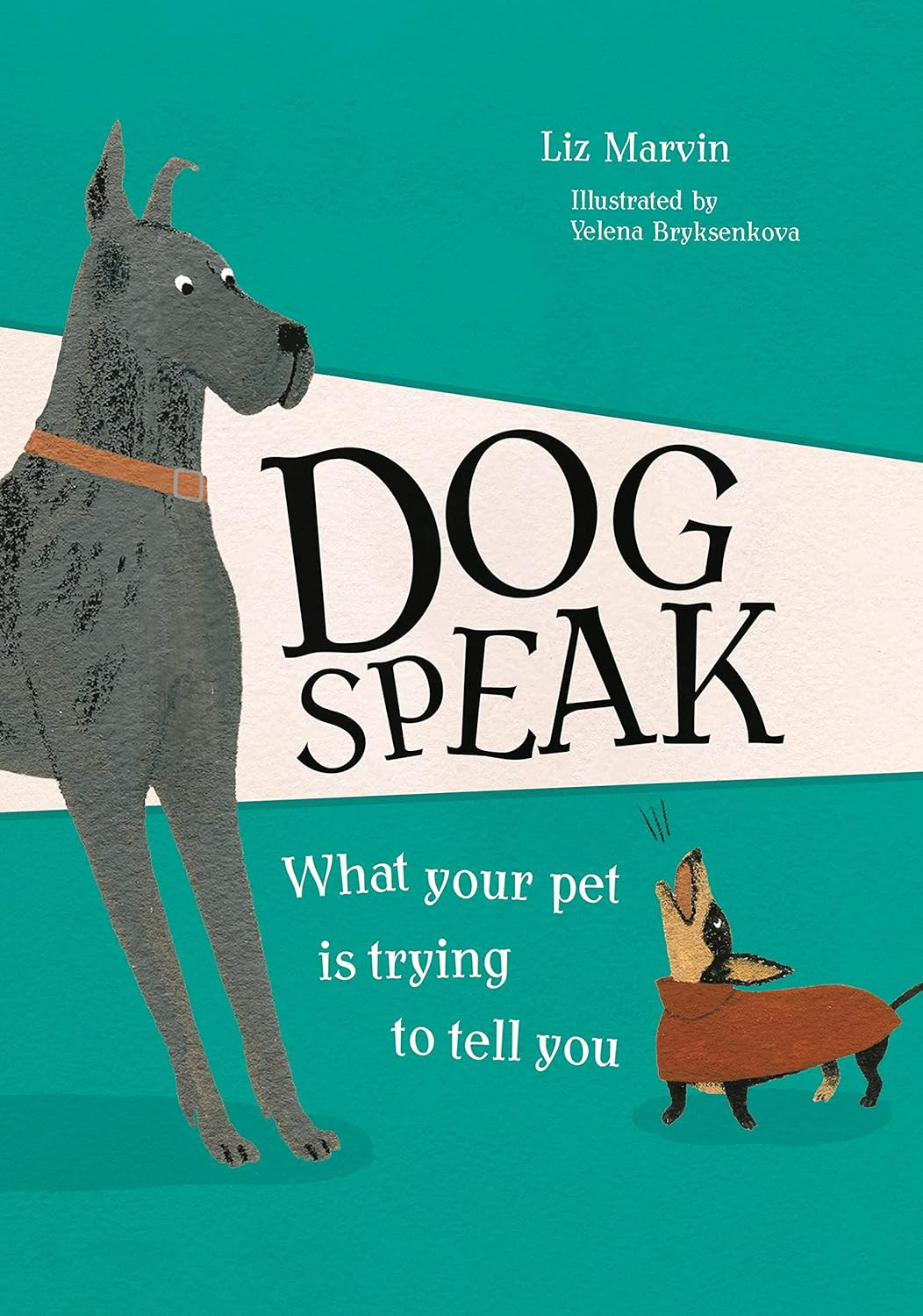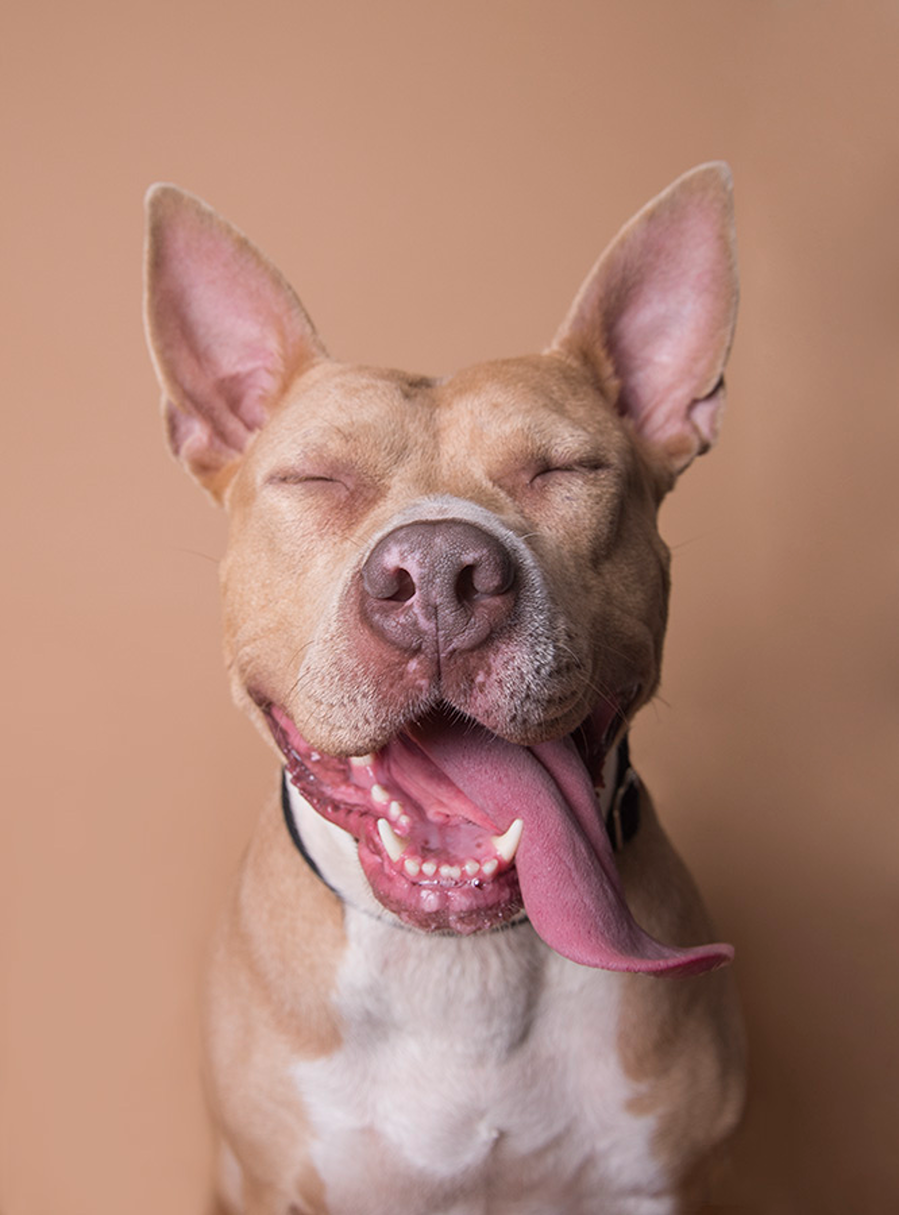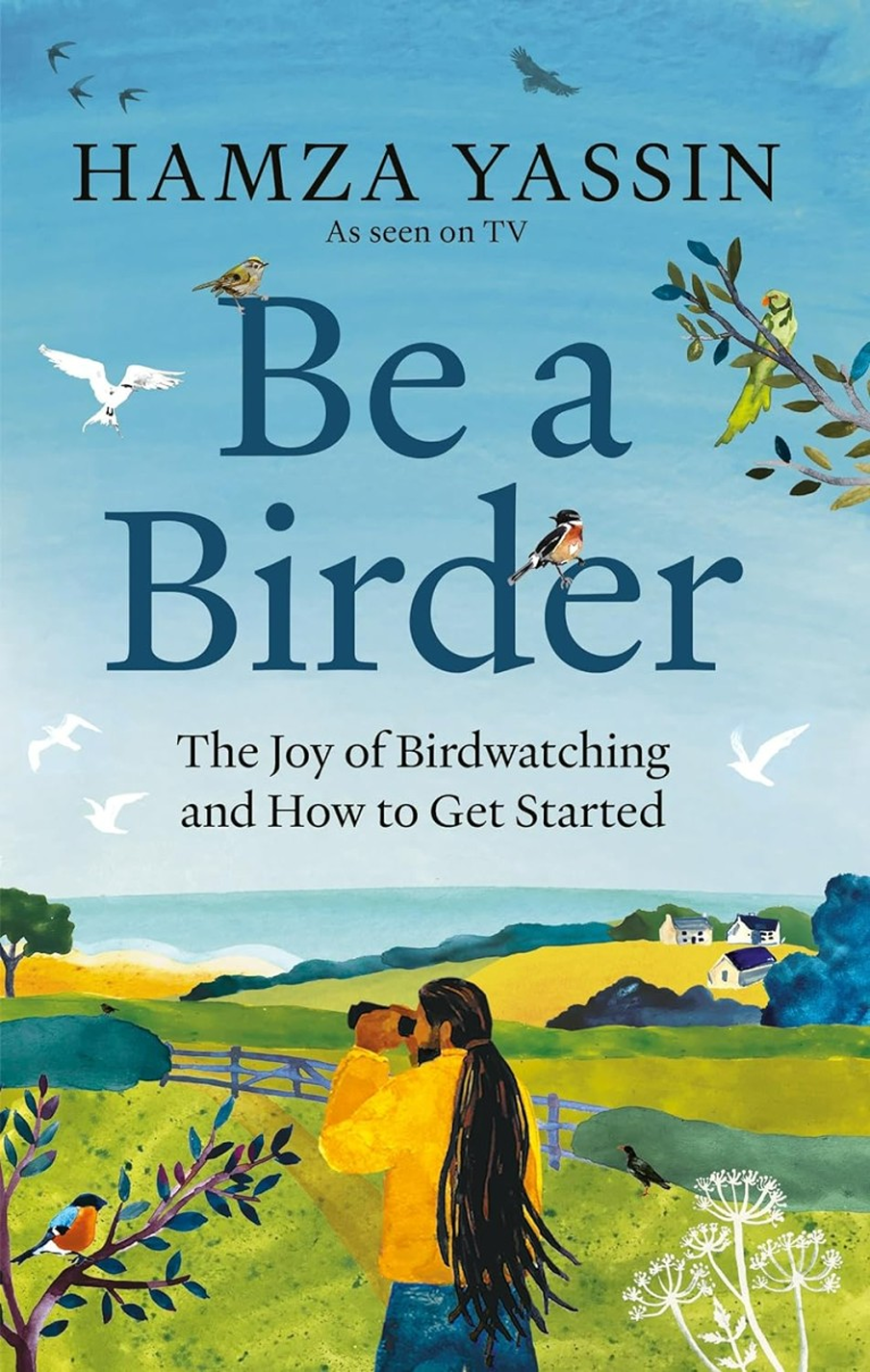How to Prevent Dog Bites And Fights

We all get upset on hearing tragic stories involving dog bites (often with children). The truth is that dogs (even if well-trained) don’t speak our language. But most incidents can be prevented simply by learning how dogs communicate, humane dog training, teaching children and others how to approach dogs, and not keeping them chained up or in stressful situations.
Nearly all serious bite incidents are from dogs that are not properly socialised (far more important than their ‘breed’, more on that later). Doggie Language is a wonderful little read by artist Lili Chin, whose charts are used worldwide to educate the public, shelters and vets on dog communication.
Understand Dog Body Language

Dogs speak with their bodies, and knowing a few signs, can almost give you warning if a dog is not happy. Sometimes wagging tails and rolling onto their back does not mean dogs are happy. Learn dog language, and you’re halfway there.
Key Warning Signs to Watch
Hardly any dog ‘bites out of nowhere’. Most give a lot of signals first. Dog trainer Liarne Henry (who has been ‘making naughty dogs nice’ for 30 years) says that growling is usually a sign to say ‘I’m scared, leave me alone’ rather than a mount to attack. She says always reward good behaviour, to focus back on you, and away from what’s making them unhappy:
Signs of an unhappy stressed dog include:
- A rigid body, often guarding food or toys
- A fixed stare (the reason you should never stare at a dog)
- Curling the lips or showing the teeth
- Lowering the body and slowing down
- Yawning or licking the lips
- Shaking and pawing
- Raised hair on the back (just like cats with arched backs)
Take these signs seriously. Early steps like calling your dog away, removing toys, or asking people to give space prevent accidents.
Dogs Trust has a great page of info on how to read a dog’s body language. In summary, signs a dog is anxious or fearful include:
Keeping Children Safe Near Dogs
First of all, don’t let children scream if they are scared of dogs. You see this sometimes in parks or at the beach. It’s dumb, as this will almost incite a dog to attack. Teach your child to just stay away from dogs, if scared.
As with adults, if approaching dogs, have them crouch down diagonally and offer a hand, so dogs can come to them. And always ask permission first, before petting a dog.
Most don’t like being patted on the head, and nearly all dogs hate being hugged. And never leave children alone with dogs (however friendly).
Teaching Calm Greetings
We all love dogs, but raising your voice and being excited, is usually not the best idea. If you watch a dog trainer or behaviourist, they are usually quite calm (sometimes silent), just going through the motions of what they do, to gain trust with a new dog.
Always reward calmness on their end too – play, a favourite treat or gentle stroke. Dogs love to learn, and especially if the teacher is kind, firm and quiet.
How to Avoid Biting the Postie!
Dogs bite posties, simply because they are defending their territory. Good training should help. Teach dogs to sit away from doors (and use one of those letterbox guards that ‘hide fingers’. Keep dogs in another room and make sure gates are locked. If still no joy, consider investing in a locked outdoor box to deliver mail and parcels.
To track progress for postie-friendly training:
Set up a simple table for each trigger you work on. You can use check marks or quick notes at the end of each session.
- 1 March (doorbell trigger), reaction was 4 (barked, settled after 10 seconds)
- 2 March (doorbell trigger), reaction was 3 (barked, calmed with treat)
- 4 March (doorbell trigger), reaction was 2 (looked up, no barking)
By tracking your dog’s reaction over time, you can see clear improvement. If your dog goes back a step, just take the process slower.
Keeping Dogs Safe in Public Areas
How you walk your dog in public affects everyone’s safety. Good lead habits stop accidents, reduce fights, and help your dog stay calm around distractions.
If walking in nature, always follow the Countryside Code, to keep all creatures safe. For coastal areas, check tide times and warning flags, and read our post on keeping dogs safe by the seaside.
Here are practical rules to follow when out with your dog:
- Keep a short, relaxed lead: A lead one to 1.2 to 1.8 metres (just below or above 5 ft, depending on size of dogs) gives you control without making your dog feel trapped. Avoid retractable leads in busy areas, as they give too much slack and make it hard to react quickly. Most dog trainers and vets are not fans, as they can tangle.
- Use a front‑clip harness: These harnesses help guide your dog and reduce pulling, making walks steadier and safer. A back-clip harness can give less control, if your dog gets overexcited.
- Watch for body language: Stay alert for signs of stress or tension in other dogs. If another dog looks stiff, cowers, or barks, calmly increase the distance. Cross the street or turn away if needed. Do not force a greeting.
- Give space at gates and corners: Slow down near corners, narrow lanes, or bins where dogs or people may appear suddenly. Let others pass before continuing.
- Stay focused in parks: In parks and fields, check where dogs are playing. If your dog is on a lead and others are running loose, keep space—some dogs do not like being approached by unfamiliar, off-lead dogs.
Guardians should also teach their dogs “Leave it” and “Come away” commands for quick redirection. This helps avoid quarrels or unwanted sniffing with other dogs.
If you see someone struggling with their dog, give breathing room instead of adding pressure. For community members, keep children from running directly up to dogs, and always ask owners before bringing over another pet for a greeting.
What About Muzzles and Head Halters?
Ask your trainer or behaviourist if one is necessary. Many dogs don’t like them, but often don’t judge, as it’s a sign that the guardian is helping to train a dog, and keep it (and you) safe. Often they are used in vet surgeries or as legal requirements for certain breeds.
If used, ensure they are breathable and let dogs pant comfortably, drink and take treats. Only use when needed, and always use alongside humane dog training methods.
How to Prevent (and Stop Dog Fights)
If you witness a dog fight, experts say the best thing is for each person to grab the hind legs of each dog. Wheel them away from each other in a large circle (like a wheelbarrow but backwards) so they can’t access each other. Keep them separate to calm down, and seek vet attention, if needed.
If you know of illegal dog fights, report to the RSPCA, Animal CrimeWatch and Crimestoppers (can be anonymous).
Legal and Community Responsibilities
If your dog has been involved in a fight, vets and therefore lawyers will usually be involved. If you feel your dog has been unfairly accused, there are dog lawyers that specialise in these of cases.
If you or someone else is bitten by a dog, clean the wound with disinfectant, apply antibacterial ointment, and cover with a bandage until you reach the GP or hospital, where you’ll receive treatment and a tetanus jab (no need for rabies jabs in England if the dog is local).
Under the Dangerous Dogs Act 1991, it is a criminal offence for a dog to be “dangerously out of control” in any public (or private) place. This includes biting or even frightening someone or another animal. Councils may use Public Spaces Protection Orders to set leash requirements, ban dogs from playgrounds. So prevention is always better than cure.
- Most pet insurance includes public liability insurance. But you still have responsibility to keep dogs under control in public areas.
- The Canine Commandments is a children’s book, aiming to help prevent dog bites. Written by a dog behaviourist, it includes the ‘ladder of aggression’ to understand dog signs, and is a good book for classroom teaching.
- Association of Pet Behaviour Counsellors can direct you to highly trained experts who are referred by vets. In some cases, they can transform behaviour of aggressive dogs, simply by a couple of home visits and follow-up calls. There is also a lot of free information on the website.
Why the Dangerous Dog Act Needs Reform

Blue Cross is does not agree with breed-specific legislation, which bans certain breeds on looks and measurements, rather than behaviour and temperament). It instead recommends ‘deed, not breed’.
Time to Give Staffies some Good Press!
Apart from Robbie Williams, the most famous resident of Staffordshire is the bull terrier. Sadly now maligned in the media, a good portion of shelter dogs are now staffies. 100 years ago staffies were known as ‘nanny dogs’ as they were protective of children.
Nearly all cases today of dog attacks are due to poor welfare, lack of training and not knowing how to approach strange dogs.
Positive Training for Aggressive & Reactive Dogs features instructions and illustrations to help eliminate aggression, barking, timidity, fear and reactivity. It includes case studies and interviews with top trainers, vets and behaviourists.
The author is a highly qualified dog trainer and behaviourist in the US, who specialises in training troubled dogs (especially ones that are reactive/aggressive to people or other dogs).
Why ‘Deed’ Is More Important than ‘Breed’
The Dangerous Dogs Act (which was rushed through in 1991, and has not reduced dog attacks at all). To label dogs as ‘dangerous’ due only to looks (there are no DNA or behavioural checks) means innocent dogs are put to sleep, leaving ‘dangerous dogs’ to not receive the help and training (and often new guardians) that they need.
Dogs presently on the ‘UK banned’ list include:
- Pitbull terriers (the above image is of a rescued American pit bull, who did nothing but kiss everyone, until she died of old age)
- Japanese toas
- Dogo Argentino dogs
- Fila Brasilerio dogs
- American XL Bully dogs (added 2023)
What’s more important is preventing irresponsible dog breeding and adoption, humane dog training and finding stray/lost pets (microchipping and neutering/spaying are also important, which stops roaming and aggression in male dogs).
The media has had a frenzy whipping up hatred and fear, yet all the major pet welfare charities want changes to the law:
Classing a dog as illegal based on looks alone, means that half the puppies in a litter of crossbreeds could be illegal, the other half legal. Blue Cross
Adding more breeds to the banned list, will not protect the public. We support calls to replace Section 1 of the Dangerous Dogs Act, with an evidence-based approach. PDSA
The law needs to be urgently reformed. Adding more dogs to the Dangerous Dogs Act will only see history repeating itself. RSPCA
Association of Pet Behaviour Counsellors (who have trained experts by referral to help aggressive dogs) writes that the Dangerous Dogs Act actually applies to all breeds. In that human guardians must not let their dogs go out of control, including attacking sheep.
Even a dog that jumps up at someone or barks at a child can be ‘deemed dangerous’. Some dogs may bite simply because they feel ill, and sometime touches a sore spot.
It’s far more complicated than the Dangerous Dogs Act makes out. This dog law company has full info on the legislation and common questions. Proving dogs are not dangerous can often be helped by recruiting expert witnesses.
Sometimes dogs are ‘spared’, if guardians can prove that dogs are neutered, microchipped, insured (and kept it in secure conditions to prevent escape). Obviously dogs still need walks, but these must be in secure places (or within a secure garden at home).
Are Staffies on the Dangerous Dogs List?
No, though you would think so due to media bias. Staffies actually used to be ‘family pets’ back in Victorian times (a bit like Labrador retrievers are today).
But due to often being ‘adopted’ by irresponsible guardians, they have had a reputation developed by the media, that they are not safe. Which has led to this breed filling up animal shelters nationwide.
All dog breeds can attack. From loyal ‘guard dog’ types (like Dobermans, Rottweilers and German shepherds) to ‘cute’ dogs like Great Danes, boxers, Dalmations and Chow Chows.
How to Prevent ‘Dangerous Dogs’
- Dogs not bred for profit is a good start. Shelter dogs that are adopted are nearly always neutered or spayed (this prevents roaming the streets looking for mates, which can lead to fights).
- Humane dog training is key to preventing dog bites. Nearly all attacks on humans are from dogs that have not been properly socialised properly (chained or not spending most time within a family environment).
- Never go straight up to a dog in the park, you’ll spook it. Ask permission first, then crouch down to their level, and sit diagonally, allowing dogs to come to you.
- We’ve all seen youngsters who when scared of dogs, let out a bloodcurdling scream, and are comforted by parents. Who instead should be teaching them never to freak a dog out, by doing this.
- If your dog likes to attack posties, keep them in a secure room while the post arrives. Or use a secure outdoor letterbox or affix a letterbox tray to your door, so posties don’t have to ‘post their fingers’.
Neutering and Roaming Prevention
Neutering (spaying or castrating) is one of the simplest ways to prevent problem behaviour. It can reduce male-to-male aggression, lessen territorial guarding, and helps with roaming (when unneutered dogs wander off to find a mate).
Micro-chipping is now required by law in the UK. If your dog escapes, a microchip makes return far more likely and proves you’re the legal guardian (owner – not a nice word, but it does have legal meaning).
Containment basics:
- Secure fencing: Check for gaps, loose boards, or low spots.
- Locked gates: Let children know to keep gates closed at all times.
- Check collars: Fit no-dangle ID tags in case the dog slips out.
Working with Dog Behaviour Counsellors

Some behaviour worries need more than DIY fixes. If your dog shows signs of reactivity, resource guarding, or you’ve had a scare, a qualified behaviour counsellor is your best bet.
Finding a certified counsellor:
- Look for membership of reputable organisations.
- Good counsellors will use humane approaches and create a tailored plan for your dog.
- Ask for references and check online reviews.
What to expect in a behaviour plan:
- Assessment visit (in your home or outdoors) to watch your dog’s behaviour and talk through problems.
- A written plan with step-by-step exercises.
- Support by email or phone, plus follow-up visits.
- Most are by vet referral early (expensive, but often worth it, and sometimes covered by your pet insurance).
- Animal Behaviour & Training Council
- CCAB (certified clinical animal behaviourists)
- Dogs Trust has its own free behavioural support phone line. It’s available for everyone, with specialist help for dogs adopted from them.







